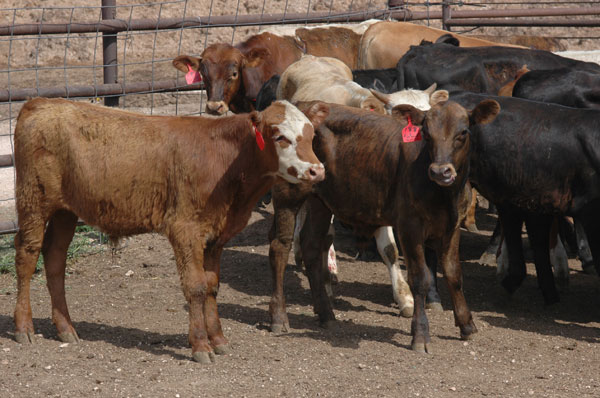Could we end up trying to force two sets of cattle through the market at the same time? Don Close, senior animal protein analyst for Rabobank, thinks it's a possibility.
May 6, 2019

“We see a gradual increase in calf prices over the next two years. For 2020, in the Southern Plains, we’re talking between $170 and $175 per cwt for steer calves [500 to 600 pounds],” said Jim Robb, senior agricultural economist with the Livestock Marketing Information Center (LMIC).
Although prices are expected to increase, during the recent BEEF Market Outlook webinar, Robb emphasized that the price profile remains relatively flat, in tandem with expectations for cattle numbers to increase.
Cyclically speaking, Robb explained producers currently face little economic incentive to grow or reduce herd numbers.
“Both beef cow numbers and total cattle numbers may be about flat for the next several years, with a slight downward trend,” Robb said. “That’s very unusual. The last time we had this was clear back in the late 1950s and early 1960s. Typically, the numbers go down, and we have opportunities with cull cow prices and bred cow prices.”
In other words, static numbers will likely alter previously successful cyclical and countercyclical strategies.
In its 2019 Baseline Outlook, the Food and Agricultural Policy Institute (FAPRI) at the University of Missouri pegs peak beef cow number for the next decade at 31.8 million head this year, falling about 200,000 head per year through 2024, and then drifting to 30.2 million in 2028. FAPRI analysis included market information through February 2019.
Conversely, USDA Agricultural Projections to 2028 project the beef cow herd at 31.4 to 32.0 million for the next decade. Those projections were completed in October 2018.
“The extent of reductions will depend upon pasture conditions and feed prices,” according to FAPRI analysts. “Productivity growth will partially offset breeding herd declines.”
Incidentally, FAPRI projects the price for steers weighing 600 to 650 pounds (basis Oklahoma City) at $143.92 per cwt in 2020, compared to a projection of $153.30 for this year. The estimated price in 2021 is $149.47, increasing to $181.35 in 2028.
USDA projects a feeder steer price (basis Oklahoma City) of $146.50 per cwt this year, declining to $120.15 in 2026 before slowly increasing again.
LMIC projects cow-calf returns over cash costs, plus pasture rent, at about $75 per cow for 2020, basis the Southern Plains.
FAPRI estimates are more pessimistic, projecting net cow-calf returns at a low of $16.15 per cow in 2020 and then growing steadily to $116.08 in 2028.
Meanwhile, there’s plenty of market uncertainty going into summer.
Lighter carcass weights continued to support beef and fed cattle prices through April. Surplus moisture promises significant grazing opportunity. The number of calves and cattle lost directly or indirectly to the stormy winter remains unknown.
Likewise unknown but likely supportive, mounting evidence suggests African swine fever is creating an unprecedented void in consumer animal protein that ultimately must be filled by international suppliers.
On the other hand, even with market-depressing carryover corn stocks, it’s too soon to tell how flooding might alter planting possibilities.
Despite current strength, unresolved trade issues could pose a barrier to U.S. beef exports. Never mind the increased cattle numbers heading to slaughter, along with expected record-large beef as well as total red meat and poultry production.
During the BEEF webinar, Don Close, senior animal protein analyst for Rabobank, said there was potential for fed cattle prices to receive added pressure in May-June or May-July on the way to a seasonal summer low, due to weather-depressed performance.
“We could start to see the first of the new-crop calves coming to market at the same time we’re struggling to clean up the remainder of long yearlings,” Close explained. “The concern I have is that we will essentially be trying to force two sets of cattle through the market at the same time.”
About the Author(s)
You May Also Like





